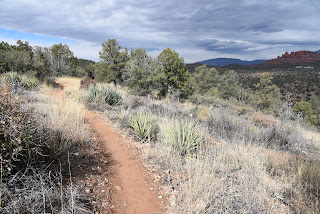TUMAMOC
HILLView of Santa Catalina Mountains from Tumamoc Hill
Just about
everybody putting one foot in front of the other on Tumamoc Hill does so with a
goal in mind, and the volcanic mesa just off Interstate 10 in Tucson holds
enough interest to satisfy the physical and mental aims of its assorted
visitors. Among the thousands who trudge up the distinctive 3,107-foot mound each year are casual
walkers, spandex-clad runners, sightseers and families pushing strollers. See-forever views on Tumamoc Hill summit
In terms of popularity, the road/trail within
the 860-acre University of Arizona ecological
preserve rivals the likes of iconic Phoenix trails like Camelback Mountain and
Piestewa Peak in visitation.Tumamoc Hill is a wildlife sanctuary
The hill’s magnetic quality can be attributed to numerous factors. It’s close to town, easy to access and the approachable paved trail offers a moderate workout packed with educational opportunities.
Designated
a National Historic Landmark in 1975, the U of A Desert Laboratory which sits
on a saddle halfway up the hill, is dedicated to ecological preservation and is
a center of research, education and finding science-based solutions to
challenges faced in the Sonoran Desert.Tumamoc Hill is home to U of A Desert Laboratory
Visitors
interested in augmenting their hike can download the Tumamoc Tour app. It’s an
hour-long audio-video companion for smart devices that serves as a virtual
docent that expounds upon on the history, ecology, archeology and native
wildlife and plants encountered along the way up the hill. Colorful brittlebush color the hill's volcanic slopes
Even without the app, strategically-placed interpretive
signs illustrate key points of interest such as the Agave Heritage Garden and an
overview of the Desert Laboratory complex.
Tumamoc Hill is an outdoor classroom
One sign explains that the name Tumamoc Hill derives from the Tohono O’odham
language and means “Horned Lizard Mountain”.
Specifically, the eponymous reptile is the Regal Horned Lizard, which is
the only species that lives on the hill, is an apt ambassador for the dozens of
animals that thrive within the sanctuary. The second half of the hike is steep
The 1.5-mile
serpentine road hike that ascends the hill’s north face begins its 700+-foot
climb on an easy grade.An app and signs provide teaching moments
The going gets
demonstrably steeper beyond the Desert Laboratory site where hikers can refill water bottles, take a break
at benches placed at scenic overlooks or make use of the portable restrooms. Beyond the laboratory, the road turns upward
on a series of switchbacks that get more vertical at each turn and reveal vistas
of the Santa Catalina Mountains to the north and nearby Sentinel Peak (2,897 feet)
that’s better know as “A Mountain”.
Saguaros line the road up Tumamoc Hill
Distant glimpses of Picacho Peak and Mount Wrightson peer out above the
urban grid of downtown Tucson and surrounding suburbs topping out with a see-forever
summit panorama.Mountain vistas abound on Tumamoc Hill Restored greenhouse at the Desert Laboratory
LENGTH: 3 miles roundtrip
RATING: moderate
ELEVATION: 2,339 – 3,098 feet
GETTING THERE:
From Interstate 10 in Tucson, take the Speedway Blvd./St. Mary’s Road exit 257. Follow the frontage road south and turn right onto St. Mary’s Road. Continue 0.93 mile to Silverbell Road, turn left and go 0.2-mile to Anklam Road. Turn right on Anklam and go 0.15-mile to the trailhead at Tumamoc Hill Road across from St Mary’s Hospital. Park along the street, not in the medical facilities parking lots.
HOURS: 4 a.m. – 10 p.m. daily
RULES: Pets, bikes and skate boards are not allowed. Hikers must stay on the paved road.
INFO:
https://tumamoc.arizona.edu/tumamoc-hill/overview





























